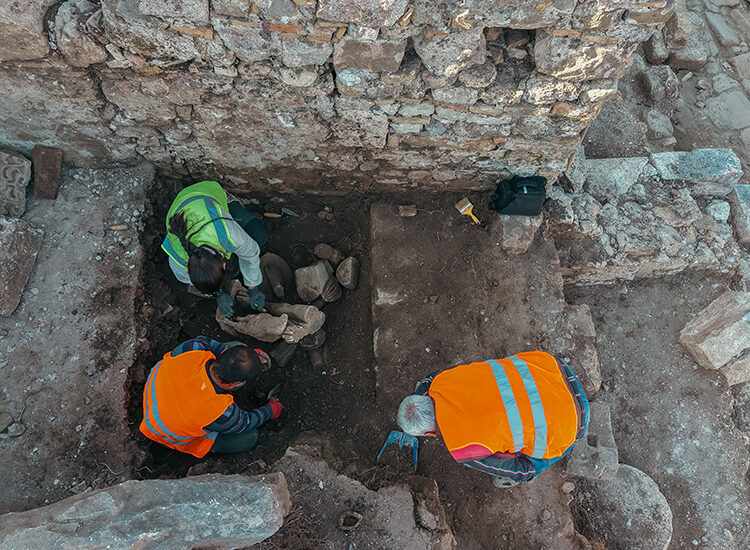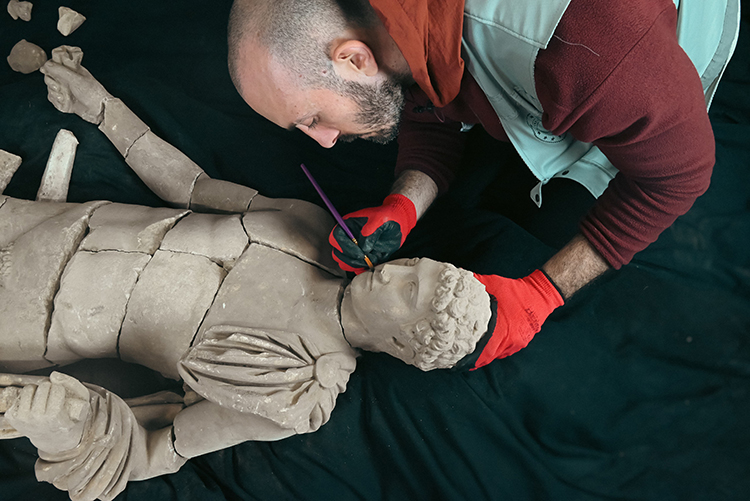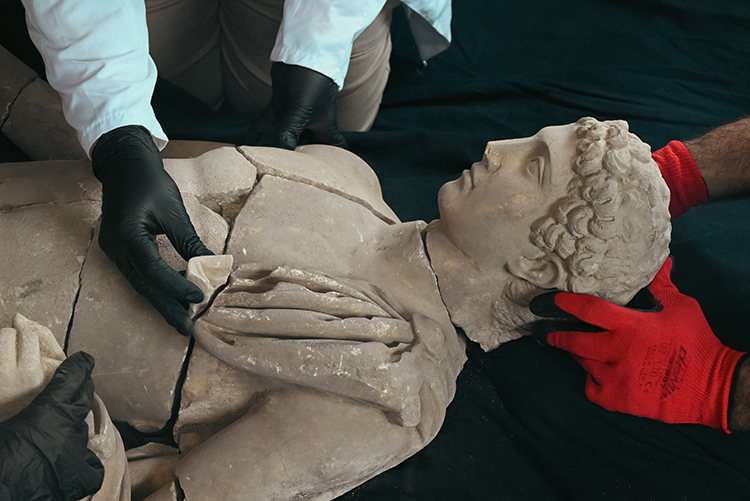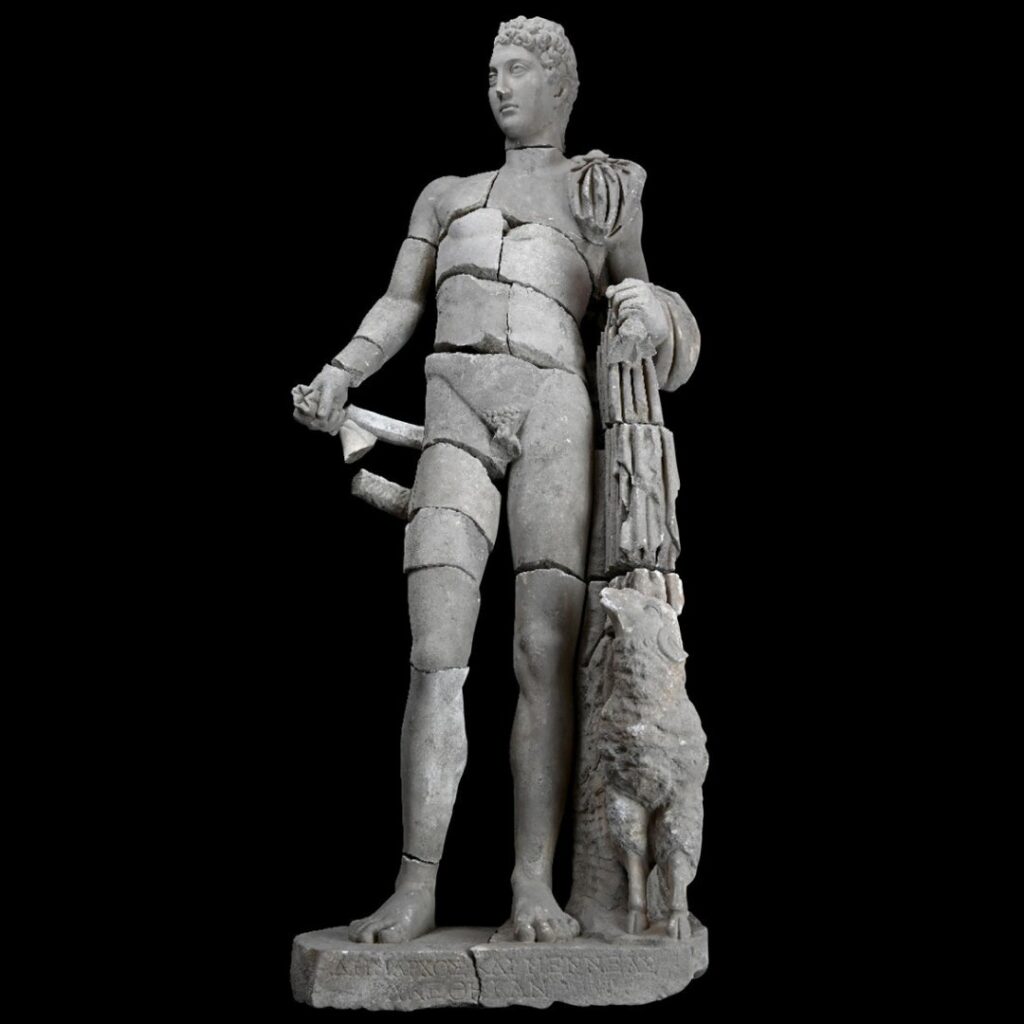
Statue of Hermes Found in the Ancient City of Aspendos in Türkiye
In the ongoing archaeological excavations at the ancient city of Aspendos in the Serik district of Antalya, southern Türkiye, a Hermes statue from the Roman Imperial Period has been discovered. The excavations at Aspendos, founded by the Akas in the 10th century BC, are being carried out under the leadership of the General Directorate of Cultural Assets and Museums as part of our “Heritage for the Future” project.
The discovery of the Hermes statue from the Roman Imperial Period was announced by Minister of Culture and Tourism Mehmet Nuri Ersoy on his social media account.

Minister Ersoy said, “In Aspendos, the silent witness of time, figures buried for centuries have come to light. During the excavations carried out as part of our ‘Heritage for the Future’ project in the Ancient City of Aspendos, a Hermes statue from the Roman Imperial Period has been unearthed. In the same area, the heads of Aphrodite and Eros, as well as statue fragments belonging to Artemis and Nemesis, were also discovered.”
According to the statement from the Ministry, a marble Hermes statue was found among the ruins of a monumental fountain (nymphaion), located east of the Theater Street of the Ancient City of Aspendos, where excavations began in the 2024 season, positioned on the south wing of the entrance gate.
The unearthed statue depicts Hermes, known as the messenger of Zeus, the chief god of Olympus, and the fastest of the gods.

In Hellenic mythology, Hermes is known as the god of roads, commerce, hospitality, diplomacy, competitions, and astronomy. He is also described as the protector of thieves and merchants, herds, and shepherds.
The statue is depicted with a purse in his right hand and a kerykeion (staff) held by his cloak hanging down from his shoulder in his left hand. A ram figure with its head turned towards Hermes is located next to his left foot.
It is seen that the weight of the statue, standing on an inscribed pedestal, is given to the left foot, and the right foot is slightly bent at the knee and thrown forward.

The statue, found in fragments during the excavations and nearly all of which has been unearthed, was combined in the excavation house depot and evaluated in its entirety.
The work, which reaches a total height of 1.65 meters with its pedestal, is dated to the Roman Imperial Period (late 2nd century – early 3rd century AD) in terms of its stylistic features.
In the area where the Hermes statue was found, heads considered to belong to Aphrodite, the goddess of love and beauty, and Eros, the god of love, were also unearthed.
Cover Photo: Yasemin Kalyoncuoğlu/AA
You may also like
- A 1700-year-old statue of Pan unearthed during the excavations at Polyeuktos in İstanbul
- The granary was found in the ancient city of Sebaste, founded by the first Roman emperor Augustus
- Donalar Kale Kapı Rock Tomb or Donalar Rock Tomb
- Theater emerges as works continue in ancient city of Perinthos
- Urartian King Argishti’s bronze shield revealed the name of an unknown country
- The religious center of Lycia, the ancient city of Letoon
- Who were the Luwians?
- A new study brings a fresh perspective on the Anatolian origin of the Indo-European languages
- Perhaps the oldest thermal treatment center in the world, which has been in continuous use for 2000 years -Basilica Therma Roman Bath or King’s Daughter-
- The largest synagogue of the ancient world, located in the ancient city of Sardis, is being restored











Leave a Reply